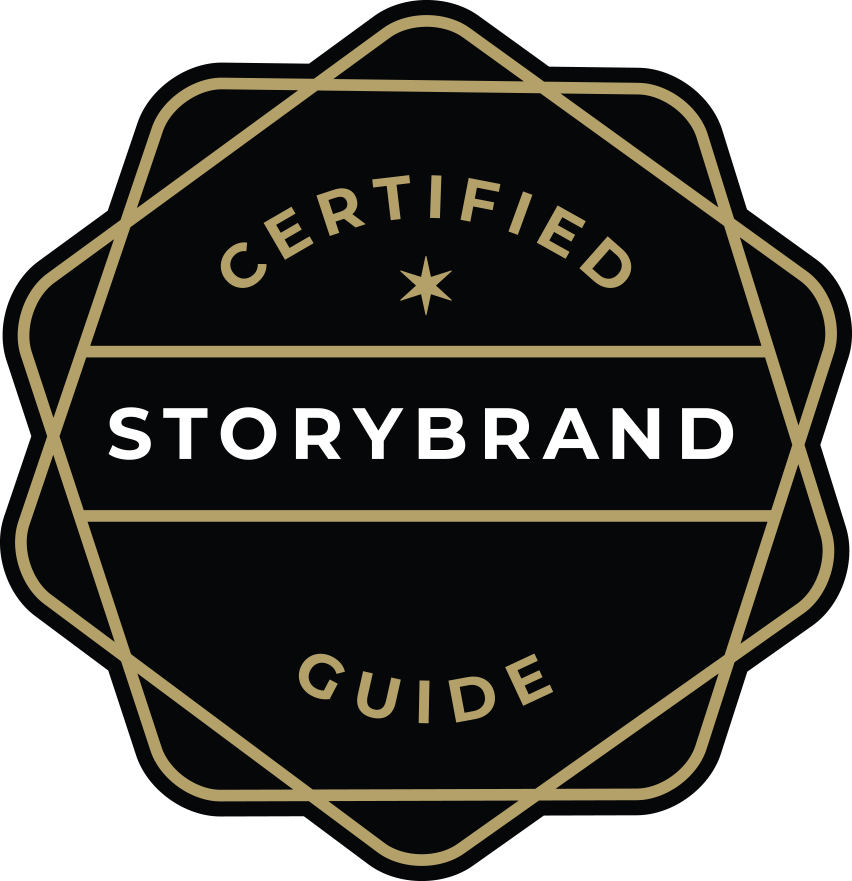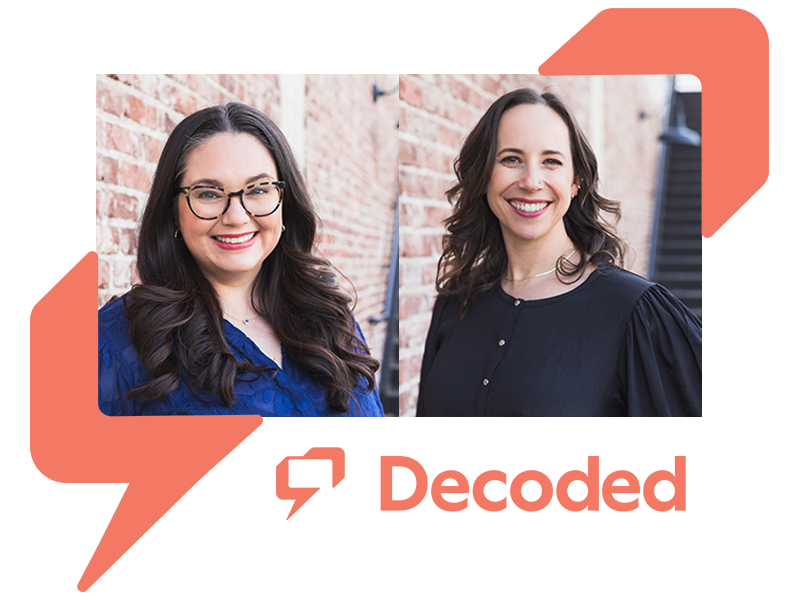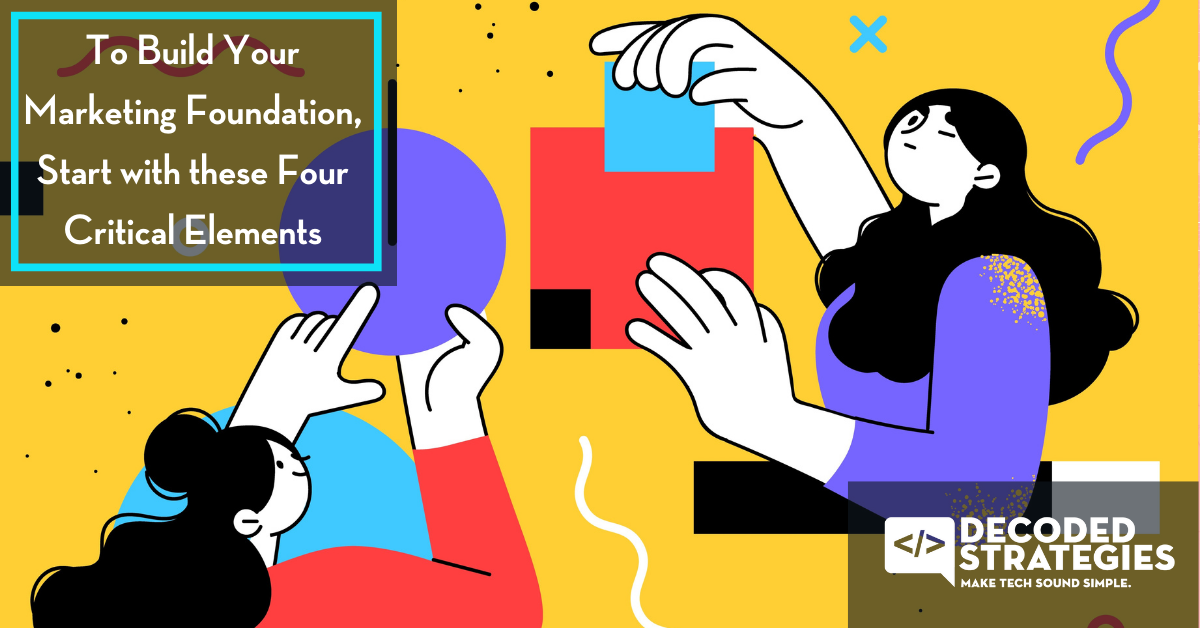The Only 4 Assets You Need To Build a Solid Marketing Foundation
It can be so easy to get overwhelmed as a marketer. There are so many strategies you could pursue, and a ton of pressure to "be creative" and think of "the next big thing."
But true, sustainable growth requires that you have the right marketing foundations in place before you do ANY of the big, flashy stuff.
All too often, we see companies decide they need a “brand refresh”, and immediately start spinning their wheels with a new logo that costs 6 figures, a massive podcast launch, or a flashy tv commercial. But before you start building out any of that, you need to start with the foundations. To start, you must have a core brand message that positions your customer at the center. This is what enables you to build foundational sales funnel to capture, convert and nurture leads.
Without any of these, that big, flashy, expensive marketing initiative will fall flat.
Not sure if you have a core brand message developed?
Here’s a quick test: can you answer these key questions about your customer?
- How are you solving their primary problem?
- How will your product or service help make their lives better?
- What negative pain points are you helping them avoid?
- What unique value are you delivering that will help them be successful?
Once you have those questions answered, have you written the right copy and built the right materials to ensure you’re communicating that message loud and clear?
Before you launch into a one-of-a-kind, really BIG marketing initiative, make sure you have your core brand message set. This is the foundation you’ll build everything on top of. Your foundation should be made up of four key elements that take the above questions into consideration.
Asset 1:
Your website
Your website copy is the single most important marketing real estate you own as a brand. It serves as your home-base and must clearly communicate what you do.
Most brands prioritize looks over substance when it comes to your website. Don't get me wrong, your web design needs to look great. But if it doesn't clearly communicate what you do, all is lost. Here's what to consider when building crystal clear website copy:
- Does your website header clearly lay out who your customer is, what they need, and how to do business with you?
- Does your website copy put your customer at the center?
- Do you clearly answer how you can solve their problems and make their lives easier?
- Are you differentiating yourself from the competition?
- Are you empathizing with what your customer is going through, while establishing your authority as an industry leader?
- Are there clear CTAs that guide leads to take action (whether unlocking content or signing up for a sales call)?
You don't need to overthink your website. But you do need to make sure you hit all the right notes, and that you communicate clearly.
Asset 2:
Lead-generating content
Not every lead who visits your website is going to buy right away. We like to think of marketing like dating. Don't propose on the first date- you're going to scare them away. You need to nurture the relationship to feel each other out and make sure it's going to work out in the long run.
The best way to ask your leads out on a first date is to offer them valuable, relevant lead-generating content in exchange for their email address. Lead-generating content can come in lots of forms:
- Downloadable PDF
- Mini email drip campaign
- Video
- Webinar
- Live workshop
- Industry research synthesis
- Checklist
- Roadmap
- Workflow template
- Industry news digest
- Infographic
- Guides
- E-Books
The list goes on and on. Think about your most valuable expertise, advice or recommendations for your customers, and distill that into a valuable piece of content. Make sure this content isn't just a re-hashed sales sheet... remember you're going on a first date so it can't be all about you and the future you imagine together. Share something of value to start building trust with your lead before you pop the question.
Asset 3:
A conversion-focused email sales campaign
Email marketing is still one of the most powerful ways to convert an audience. As soon as leads request content from you, it's essential you follow up with them. This is your opportunity to take that lead from a first date to meeting your parents.
Once someone requests your lead-generating content, they should get automatically entered into a 5-part email sales campaign. This email campaign should deliver the content directly (i.e. include the Direct Download link in the first email, or share relevant information on how the lead can access the content), and touch on these important points from your brand story:
- Email 1: Intro and Delivery of Lead-Generating Content
- Email 2: Communicate the problem you solve and how you solve it
- Email 3: Overcome a common objection leads have during your sales process
- Email 4: Communicate empathy for what your leads are going through and your authority to solve it
- Email 5: Sales Letter (i.e. bring the whole thing home)
These emails should all be sent spaced roughly one to three days apart, depending on how quickly you'd like to communicate with your leads. We like to space Emails 1 through 3 out by one day, and emails 4 and 5 spaced out by two days. By the end of the 5 emails, hopefully leads will take your CTA and schedule a sales call! If not... there is still hope! Read on...
Asset 4:
Nurture Content
Ok, so you gave it your best one-two punch, and the lead still didn't convert.
THAT'S OK.
Not every lead is going to buy from you. But what you don't want to do is keep going back to them to push the sale. That will frustrate both you and the lead, and likely won't end in the sale you're looking for.
Once you've taken a lead through your sales funnel- website, lead-generating content, email sales campaign- and they haven't bought, your next step is to deliver them nurture content.
At this point, the lead knows a thing or two about your business, they understand what you have to offer. So now you have 3 objectives:
- Continue delivering value to build trust and credibility
- Help agitate the problem your lead is experiencing to drive demand for your product
- Stay top of mind for the lead so when they are ready to solve the problem, you're the first call they make
By focusing on these 3 objectives, you'll create more opportunities for those leads to come back to you in the future.
To start creating nurture content, first start building an Email Nurture Campaign. Don't be fooled. This is not your parent's "email newsletter" which historically have been focused on news and updates from the company. But do you know who is interested about news and updates from your company? Really only anyone who works at your company.
Your Email Nurture Campaign should consist of highly valuable content - much like your Lead-Generating Content. Think of the types of emails you open regularly. They contain value, right? They help you solve a problem, give you a new lens on an industry issue, provide an insight you hadn't thought of before. That's what you want to focus on here. Take all your expertise, and be generous with what you share to help others.
These shouldn't be hard sales emails. You already did that, and the lead wasn't ready. So instead, become an awesome friend to them and give them value even if they didn't accept your proposal right away. A good rule of thumb is in about every 1 out of 4 nurture emails to include a small sales pitch. Remind them that you can help them... but do it lightly.
We recommend sending your nurture emails out every 1 - 2 weeks.
From there, you can easily repurpose this content to share out on social media, to create expert videos, webinars, etc. Consistency is key here, both in cadence of communication, and to ensure you're always coming back to your roots: your customer is the hero of your story, not your brand.
Takeaways:
Without these critical marketing and sales funnel foundations in place, your cool initiatives might attract some eyeballs...but they won’t drive sales.
You deserve to be a marketing rockstar, and make monumental things happen for your business. We're here to help make sure you've got the foundations in place to launch your company into the stratosphere.
Schedule a call with us, and we'll talk about how we can help.
Making Tech Sound Simple
We help tech-focused companies implement the StoryBrand framework in simple, powerful marketing and retention.


Want to learn more marketing best practices?
Sign up for our weekly emails to become a master of clear marketing.
Unleashing Marketing Success for Cybersecurity Companies: The Key to Identifying Your Ideal Customer
5 Pillars of Customer Retention
How to Build Empathy into Your Brand Marketing

Decoded
A Fresh Perspective
Brands with incredible products get beat by the competition every day. Confusing messaging will cost you on every critical front of your business. Decoded delivers messaging strategy & marketing services to communicate about your business in the way your audience actually wants to hear it.
